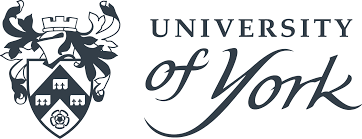University of York: Tongue movement in babies could point to ‘silent’ language practice
A study at the University of York aims to use ultrasound technology to understand whether language development in infants starts much earlier than the ‘babble’ phase.
It is thought that tongue movements in 0-12 month-old babies could be the ‘silent phase’ of language development, when the tongue is starting to practise the formation of certain sounds before vocalising them in what is known as the babbling phase.
Dr Catherine Laing, from the University of York’s Department of Language and Linguistic Science, is using ultrasound technology on infants to analyse tongue movements and see if there is any correlation with the sounds and words that are directly spoken to them as well as sounds that they pick up from around them.
The technology has not been used to analyse language learning on children under the age of three before, but is an important step forward in understanding the evolution of language development, as well as how certain common practices, such as the use of dummies, and physiological issues, such as cleft palate, could potentially impede tongue movement or interrupt learned movement patterns.
Complex process
Dr Laing said: “Language development is a hugely complex process and yet it happens at such a rapid pace – typically between the ages of four months and three years old.
“Knowing more about how language learning happens can help to inform early years health and education policies, as well as point to better methods of support to improve learning outcomes for children at risk of later speech and language difficulties.
“Language development can be a source of great anxiety for parents so having access to advice and support from health workers and language therapists that is backed up by research, is a significant step forward in how we approach these crucial early years of a child’s learning.”
Ultrasound
The study, supported by just over £1 million from the European Research Council (ERC) Starting Grant scheme, will use data from ultrasound to help ‘map out’ the shape of an infant’s vocal tract, and show how they might rehearse speech sounds, and develop the fine movements required for speech production.
The effectiveness of ultrasound in assisting in this information gathering could provide an evidence-base for them being used in more clinical areas, when children face issues with speech, for example, and need the support of speech and language therapy services.
Exciting area
Dr Laing said: “The use of ultrasound in language development is an exciting area and one that has not tested babies’ vocal development before. We hope that it might also help us point to what differences, if any, there are between language skills learnt from parents and carers talking directly to a baby, and sounds that they may pick-up from conversations that go on around them.”
The research is part of the ERC’s Horizon Europe programme, which aims to support younger scientists, who have between two and seven years of experience post their PhDs, to launch their own projects.

